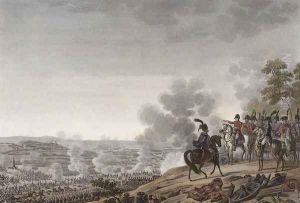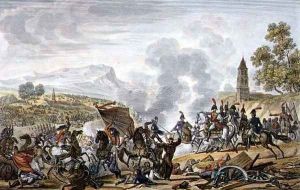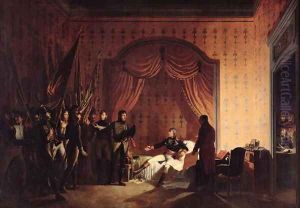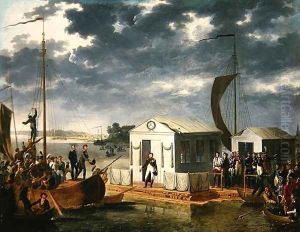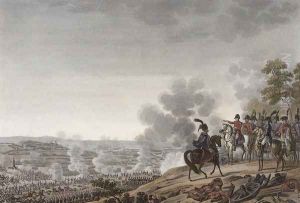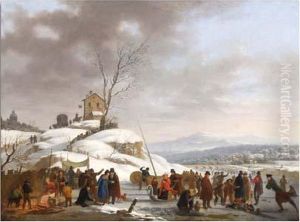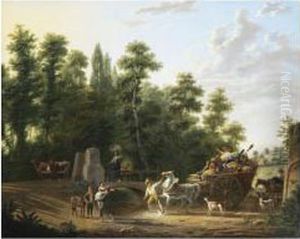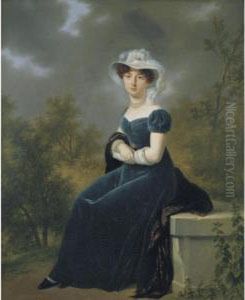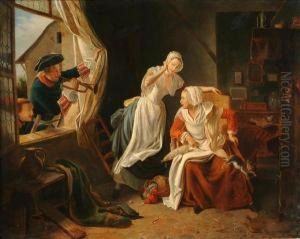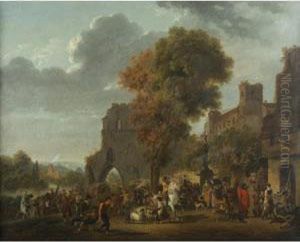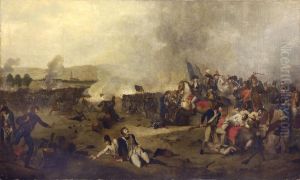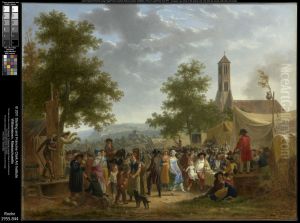Roehn, Adolphe Eugene Gabriel Paintings
Adolphe Eugène Gabriel Roëhn was a French painter born on November 7, 1810, in Paris, France. He was recognized for his historical and genre paintings, as well as for his works depicting contemporary events of the 19th century. Roëhn was a student of his father, the German-born painter, Jean Henri Roëhn, and later he studied under Jean-Baptiste Regnault, a prominent French painter of the time.
Roëhn began exhibiting his works at the Paris Salon from a young age, earning a third-class medal in 1833 and a second-class medal in 1834 for his historical paintings. He continued to exhibit regularly, and his works were well-received by both critics and the public. Roëhn's paintings often featured scenes from French history, including the Napoleonic era, which was a popular subject amongst the French audience of the time.
In addition to historical paintings, Roëhn also produced genre scenes, capturing the nuances of everyday life with a keen eye for detail and an emphasis on the theatricality of the mundane. His style was characterized by fine brushwork and a vivid use of color, which brought his compositions to life.
Despite his success, Roëhn's life and career were overshadowed by the political upheavals of the 19th century, including the revolutions of 1848 and the rise of the Second Empire under Napoleon III. These events influenced the art world and the type of works that were in demand, with a shift towards more official and propagandistic art.
Roëhn's work, however, maintained a focus on the romantic and picturesque, remaining true to his interest in the beauty of the historical narrative and the charm of everyday scenes. His legacy includes contributions to the decorative arts, with some of his designs being used for tapestries and porcelain.
Adolphe Eugène Gabriel Roëhn passed away in 1877, leaving behind a body of work that captures the spirit of his time. His paintings can be found in various collections and museums, preserving the memory of a period that saw significant transformation in French society and the arts.
